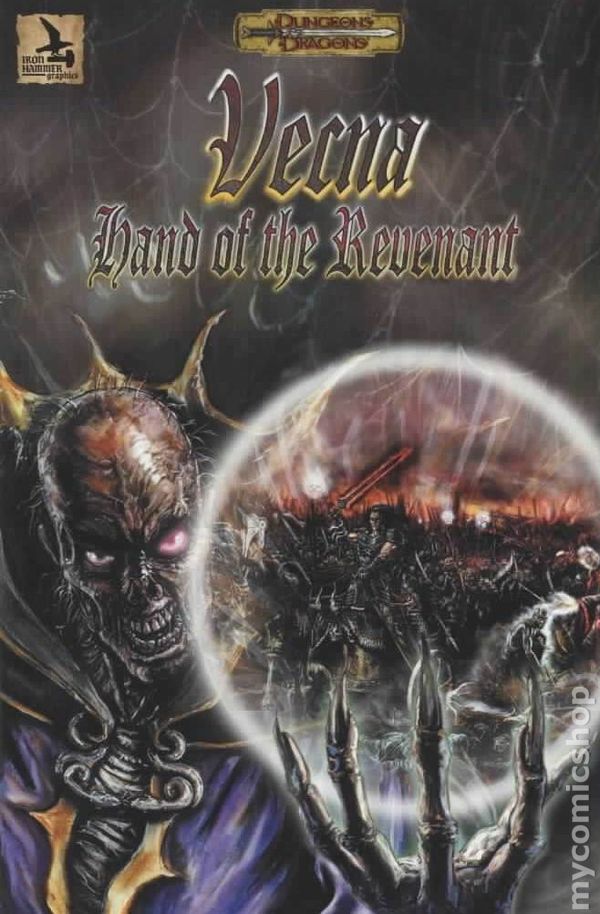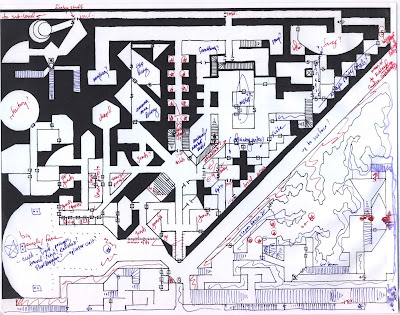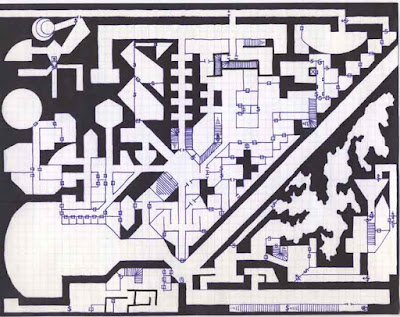 |
| Castle Xyntillan by Gabor Lux (E.M.D.T. release #60) - Cover art by Peter Mullen |
Castle Xyntillan by Gabor "Melan" Lux - Part 1
Castle Xyntillan is Gabor Lux's tenth English-language publication since he launched Echoes from Fomalhaut in March 2018, and is also the sixtieth---yes 60th!---title released from E.M.D.T., the First Hungarian d20 Society since 2003 (and 18 of the pre-2018 E.M.D.T. titles are available in English, too). Unlike the many gems that appear in Gabor's regular zine, Castle Xyntillan is a self-contained adventure that falls into several simultaneous categories of interest:- Castle Xyntillan is a large campaign dungeon in scope, although not a traditional mega-dungeon in design or presentation
- Castle Xyntillan is an homage to the classic Judges Guild haunted mansion adventure, Tegel Manor
- Castle Xyntillan is also an homage to Clark Ashton Smith's Averoigne pulp fictions, and perhaps by way of inspirational osmosis, Tom Moldvay's X2 Castle Amber
None of these individual influences speak to Castle Xyntillan's perhaps-primary intent, in that it also serves as the first English-language release and publication for the upcoming Helvéczia RPG. From the penultimate page:
[The Helvéczia RPG is a] lightweight, light-hearted historical fantasy game for playing scoundrels and low-lives in an alternate-reality magical Switzerland (and beyond) ca. 1698, [that] gives you everything you need for fast-paced picaresque adventures featuring stagecoaches, robbers, daring escapes and dark deviltry. Using a greatly streamlined, six-level ("E6") version of the renowned d20 System, Helvéczia has been thoroughly reworked and customized to capture the spirit of swashbuckling movies, adventure novels, penny dreadfuls and colourful historical legends. Match your wits against the lackeys of robber barons and faerie realms; waste your winnings in merchant towns ruled by avarice and eccentric custom; and choose between virtue and sin in a world where Heaven and Hell contend for the souls of mortal men.
Gabor concludes this preview with: "A love letter to dodgy pamphlets, stamp-sized mini-states, and the oddball side of European history, Helvéczia is (hopefully) coming 2020 in a hardcover edition (including plentiful support material and GM advice), along with maps, a regional hex-crawl supplement describing four mountain cantons, and a selection of adventure scenarios" (page 131).
That's a lot of ground to cover, so let's get to it!
Castle Xyntillan - The Specs and Details
Castle Xyntillan is a 132 page hardcover book and separate map packet you can buy from Gabor's store for $40 USD plus shipping from Hungary; it contains:
- Introductory matter including two pages of playtesting notes for the PCs still alive, and a far longer list of those slain within its confines =)
- 18 lettered sections that detail 298 encounters spanning the castle ruins, grounds, and dungeon environs
- three two-page spreads of maps: the main castle level and its immediate grounds, the upper stories of four sections of the castle, and the dungeon level and indoor wilderness; the main maps are also reproduced in smaller sections within the encounter keys for quick reference, and as posters in the map packet (more below)
- six tables of setting content and new rules: The Rumour Mill with 36 entries, Morale and Men rules, 100 Companion Quirks, 100 Random Curios, and the Table of Terror with its 12 amusingly random panic/flight survival outcomes
Castle Xyntillan - The Artwork and Maps
Gabor worked with three OSR artists to illustrate Castle Xyntillan: Peter Mullen (color cover and B&W interiors), Stefan Poag (B&W interiors), and Denis McCarthy (B&W interiors), who recently showcased his pieces at https://gwythaintny.wordpress.com/2019/12/21/castle-xintillan/. The work of all three artists complements the look and feel of the adventure, and breathe life into its varied NPCs and environs (with some help from the dead Victorians, too!).
Castle Xyntillan's maps were rendered by Rob Conley of Bat in the Attic Games. His mapping style is clean and the map packet's four 12" x 16.5" poster maps are an indispensable addition to the book; they are printed on the same cream-colored, heavy paper stock that Gabor has used for his Echoes from Fomalhaut map inserts. The four maps are:
- A single-sided DM map of Castle Xyntillan's ground floor and environs
- A double-sided DM map of the upper stories for Castle Xyntillan, as well as the dungeon level and wilderness side-level on the reverse side
- A singled-sided player map of Castle Xyntillan's ground floor and environs
- A double-sided player map of the upper floors and dungeon/wilderness side-level
To be concluded in part two!
Allan.















